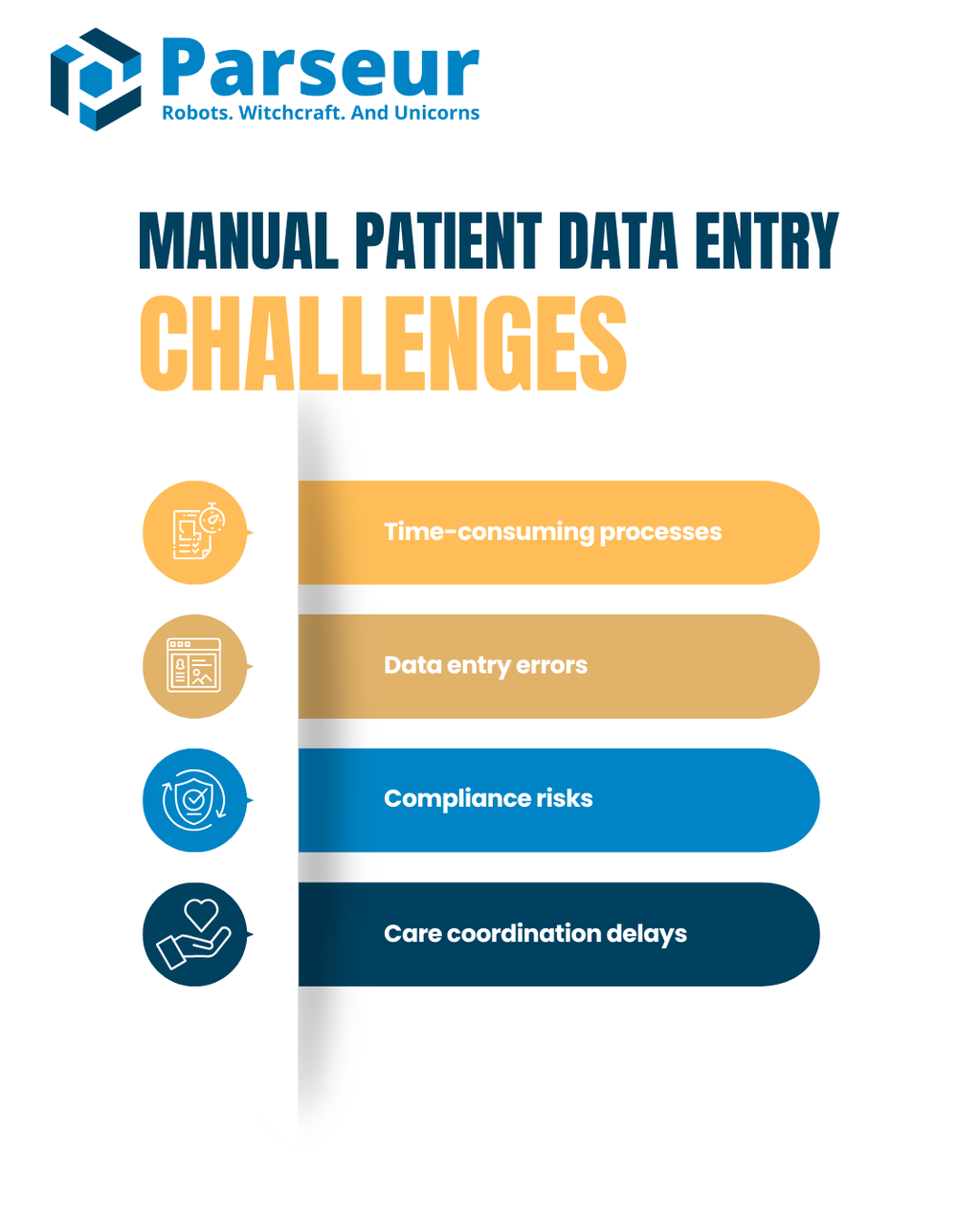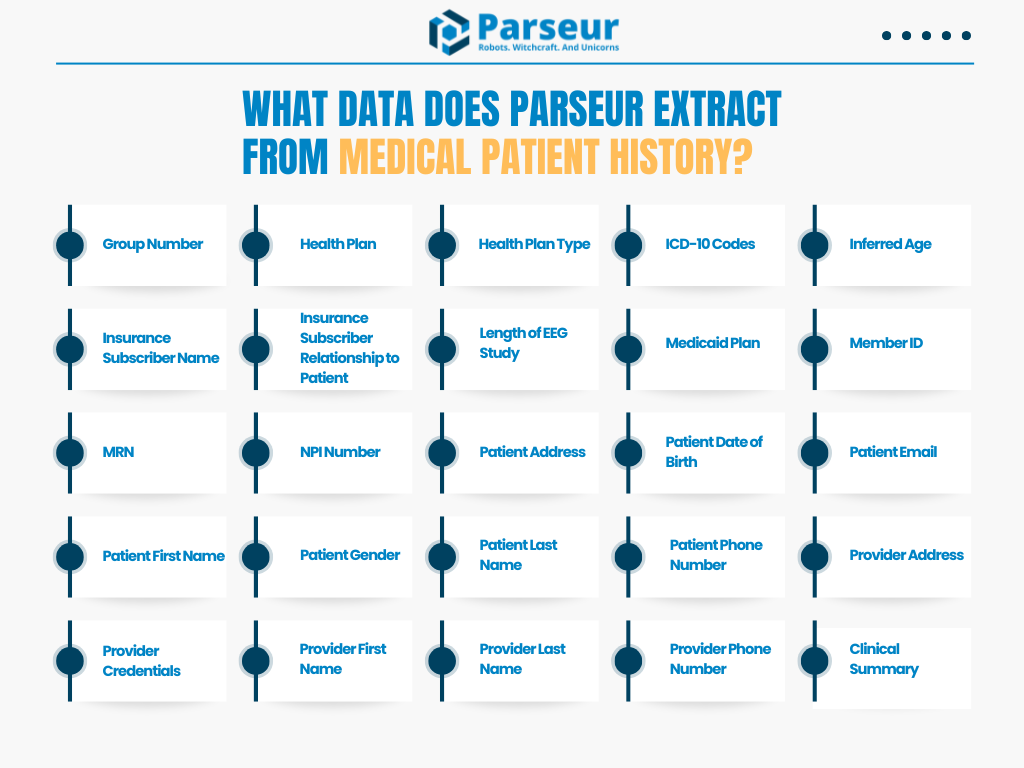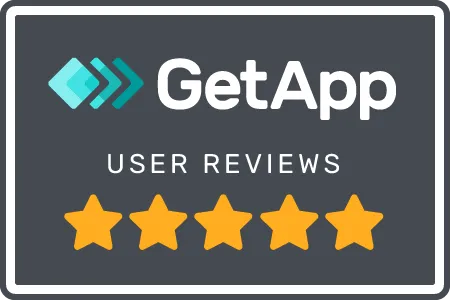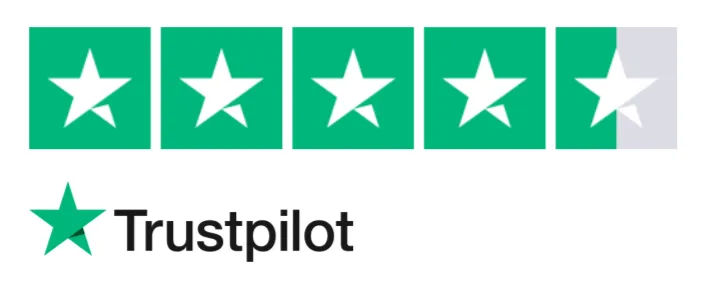Key Takeaways
- Manual data entry from medical forms leads to delays, burnout, and error-prone patient records.
- Parseur automates data entry from medical forms with an easy-to-use interface.
- Healthcare providers can save hours of administrative work and improve care coordination with Parseur.
Accurate and timely patient information is essential for delivering quality healthcare. Every detail collected during patient intake, from names and birth dates to medical conditions and family history, plays a vital role in diagnosis and treatment.
However, many clinics still rely on manual data entry from paper or digital forms. This process slows operations, increases the chance of errors, and contributes to staff fatigue. Nurses and administrative staff often spend more time inputting data than interacting with patients.
According to a report by the National Library of Medicine, nurses spend over 35.3% of their time on documentation, leaving less time for direct patient care.
This is where automation can help. Parseur is a document processing solution designed to help healthcare providers automate the intake of patient histories. With AI-powered OCR, Parseur can extract key information from medical forms and send it directly to EMRs, CRMs, or spreadsheets, enabling teams to get up and running without requiring specialized technical skills.
HIPAA-friendly and highly accurate, Parseur simplifies patient onboarding and allows your team to focus on what truly matters: patient care.
What Is Medical History Form Parsing?
Manually scanning or uploading patient documents is only the first step. The real value lies in extracting structured data from those forms to be used across your healthcare systems.
Using OCR and AI, medical history form parsing automatically extracts structured data such as medications, conditions, allergies, and patient demographics from scanned or digital forms.
Unlike basic document scanning, which only creates an image or PDF of a form, medical form OCR, combined with AI, extracts real data that can be organized, stored, and used for clinical or administrative purposes. This helps eliminate the need for time-consuming manual transcription and reduces the risk of human error.
Parseur can extract data from a wide range of patient history documents, including:
- New patient registration forms
- Medication and allergy declarations
- Family medical history checklists
- Symptom questionnaires
- Insurance and billing forms
Whether the forms are received by email or scanned in from the front desk, Parseur can help convert that unstructured information into a usable format with minimal setup.
Common Challenges In Manual Patient History Data Entry
Manually entering data from patient forms is still a standard practice in many clinics, but it creates major bottlenecks affecting care delivery and staff productivity.
Administrative and nursing staff often spend hours transcribing information from handwritten or printed forms into internal systems. This task is repetitive and highly error-prone, especially when forms are filled out quickly or include unclear handwriting.
Studies from the National Library of Medicine show that manual entry errors occur in 3.7% of lab results, with five discrepancies per 1,000 entries potentially affecting clinical care.
Another study from BMJ Journals, comparing manually entered pathology data to electronic records, found an overall error rate of 2.8%, with individual field error rates ranging from 0.5% to 6.4%, especially in descriptive or free-text fields.

Other challenges include:
- Time-consuming intake processes, especially for new patients
- Data entry errors that can impact diagnosis and treatment plans
- Compliance risks due to missing or incorrectly transcribed fields
- Care coordination delays occur when data is not immediately available in EMRs
These issues are especially problematic in urgent care, remote consultations, or multi-location practices where fast and accurate data access is critical.
Here is how Parseur compares to manual data entry:
| Method | Manual Data Entry | Parseur Automation |
|---|---|---|
| Avg. Time per Form | 7 to 10 minutes | Under 1 minute |
| Compliance Risk | High (human error) | Low (standardized fields) |
| Staff Burnout Risk | High | Low |
Healthcare providers can improve patient outcomes and operational efficiency by addressing these challenges.
How Parseur Automates Patient History Form Extraction?
Processing patient intake forms like symptom checklists, medication declarations, and medical history surveys can be time-consuming and error-prone, especially when dealing with scanned documents or emailed PDFs.
On average, Parseur customers save 189 hours of manual data entry per month, translating to approximately $7,557 in labor cost savings. This makes Parseur up to 98 percent more cost-effective than manual data entry, with a potential of over $90,000 in annual savings simply by automating routine form processing.
Parseur simplifies healthcare data extraction by transforming unstructured medical documents into clean, structured information that can be used directly in EMRs, spreadsheets, or CRMs. Here is how it works:
1. Form collection
Start by sending patient forms to your dedicated Parseur mailbox. This can include scanned PDFs, emailed registration packets, or digital intake forms. You can automate the collection process with email forwarding, integrations, or an API connection, ensuring everything flows into one organized workspace.
2. AI-powered OCR processing
As documents arrive, Parseur’s AI OCR engine analyzes them and identifies key fields. It supports checkboxes, typed text, and structured layouts commonly found in medical forms.
3. What medical data is extracted?
Parseur can extract the following information from common medical forms:
- Patient name, date of birth, and Social Security Number
- Current medications and known allergies
- Past or chronic medical conditions
- Family medical history indicators
- Symptom flags and form submission date

4. Structured data output
Once extracted, the data is transformed into structured formats such as CSV, Excel, or JSON. This ensures consistency across all patient records and removes the need for manual copy-pasting.
5. Seamless integration with healthcare tools
Parsed data can be routed automatically to EMRs, CRMs, or healthcare databases. Parseur connects to tools like Google Sheets, Salesforce Health Cloud, and custom EMRs using Make, Zapier, or its native API. This creates an enhanced workflow from intake to data storage without repetitive data entry.
Whether your clinic handles a few patients a day or processes hundreds of forms across multiple locations, Parseur offers a scalable and secure way to automate patient history intake efficiently.
Benefits For Healthcare Providers
Automating patient history form extraction is more than just a time-saver. It can directly improve accuracy, compliance, and the overall patient experience for clinics and healthcare networks.
For instance, a study from IDS Tech Solutions, demonstrating the benefits of automating patient history form extraction, shows that hospitals can achieve up to 30% cost savings by reducing manual labor costs through data entry automation. This efficiency boost allows staff to focus more on patient care instead of administrative tasks, while also improving data accuracy and compliance.
Using Parseur to extract data from patient forms gives your team a reliable way to reduce errors and free up time typically spent on administrative tasks. This means your staff can focus more on patient care than data entry.
Key benefits of using Parseur in healthcare:
In healthcare and insurance settings, summarizing a patient’s medical history is both critical and resource-intensive. Typically, this process involves a certified medical professional, often a physician spending valuable time reading through long, complex clinical documents to identify relevant symptoms, conditions, treatments, and risk factors.
This is where automation can step in, not to replace clinical judgment, but to augment it.
Parseur AI can act as a frontline assistant, scanning lengthy patient records and generating a structured summary of key medical events, symptoms, and history indicators. This preliminary overview can then be reviewed and validated by a licensed physician, reducing the time spent on initial review by up to 90%.
It’s important to emphasize: Parseur is not designed for high-stakes decision-making, such as surgical planning or emergency diagnoses. However, for workflows like insurance risk assessment, medical underwriting, or clinical trial screening, Parseur can be an invaluable tool for speeding up document processing while keeping a human in the loop for oversight and compliance.
By combining AI-powered summarization with expert validation, organizations can dramatically lower costs, reduce clinician burnout, and accelerate the delivery of care or services all while maintaining trust and precision.
Faster onboarding
Patient records are processed and ready before the appointment begins, helping reduce wait times and workflow front desk operations.
Improved accuracy
Extracted data maintains consistent formatting and minimizes transcription errors that could impact treatment decisions.
Better compliance
Standardized data output makes meeting documentation standards and maintaining accurate audit trails easier.
Reduced administrative workload
By automating the extraction process, teams spend less time on repetitive form entry and more time on patient-facing responsibilities.
Scalable for any size practice
Whether you manage a small clinic or a multi-site network, Parseur adapts to your document volume without requiring technical configuration or ongoing maintenance.
These benefits support better operational efficiency and more reliable patient care across your organization.
Built-in features include:
- Role-based access controls to limit data visibility
- End-to-end encryption for data both at rest and in transit
- Secure cloud infrastructure hosted in HIPAA-ready environments
Healthcare Teams Are Saving Time And Reducing Manual Work With Parseur
Document automation can significantly reduce the time spent on repetitive data entry in the healthcare field, where accuracy and efficiency are critical. Parseur makes it easier for medical teams to extract essential data from emails, PDFs, and scanned forms to focus on patient care instead of paperwork.
Healthcare professionals are already seeing results. Adrienne Cooksey, an FQHC Consultant, shares:
Similarly, Bernard Rooney, Managing Director at Bond Healthcare, notes:
Parseur is a highly customisable product with a straightforward solution for data extraction through to complex spreadsheets. We have used the software for many years and have found it to be a strong, easy-to-use, and reliable product. — Bernard Rooney, Capterra review
These testimonials reflect how automation makes day-to-day operations more manageable across healthcare organizations.
Your Next Step In Healthcare Automation
Managing medical forms shouldn’t slow your team down. With Parseur, healthcare providers can eliminate hours of manual work, reduce errors, and accelerate patient processing, all while maintaining compliance and data integrity.
A recent Deloitte 2024 Health Care Outlook report states that 83% of hospitals use AI to improve patient care and workflow efficiency, underscoring the widespread adoption of automation across clinical and administrative functions.
From patient intake to insurance claims and lab reports, Parseur gives your team the tools to automate form processing quickly and precisely. You don’t need to be a developer or tech expert to get started; upload a document, set up your data fields, and connect your systems.
By 2030, AI will not only process forms; it will predict several diseases and suggest preventive measures, as stated by Weforum. As AI continues to evolve with new technologies, the integration of AI will become essential rather than optional, offering more personalized, efficient, and effective care for all.
Ready to see how Parseur can transform your workflow?
Start your free trial and reclaim time for what matters most: patient care.
Frequently Asked Questions
Are you curious about how Parseur fits into your healthcare workflow? Whether you’re managing patient intake forms, lab reports, or billing documents, these quick answers will help you understand what to expect.
-
Can Parseur extract data from handwritten medical forms?
-
Parseur works best with typed forms. It may capture basic handwriting, but results vary depending on the legibility and consistency of the script.
-
Can I send extracted data to my EMR or healthcare CRM?
-
Absolutely. Parseur connects with tools like Make, Zapier, or your in-house system using webhooks or API to automate data delivery.
-
How long does the setup take?
-
Most users create and test it within seconds. From there, it can run in the background without constant oversight.
-
What are ICD-10 codes?
-
ICD-10 is an alphanumeric code used to classify and record diseases, conditions, and procedures for billing and documentation. It helps standardize diagnoses and treatments across healthcare providers and insurance systems.
-
What is MRN?
-
MRN stands for Medical Record Number, a unique ID assigned to each patient to track their medical history within a healthcare system. It ensures accurate record-keeping and easy retrieval of patient data across visits.
-
What is an NPI number?
-
An NPI (National Provider Identifier) is a 10-digit number that identifies healthcare providers in the U.S. for billing and administrative purposes. It’s required for HIPAA-covered entities to process claims and coordinate care.
Last updated on




